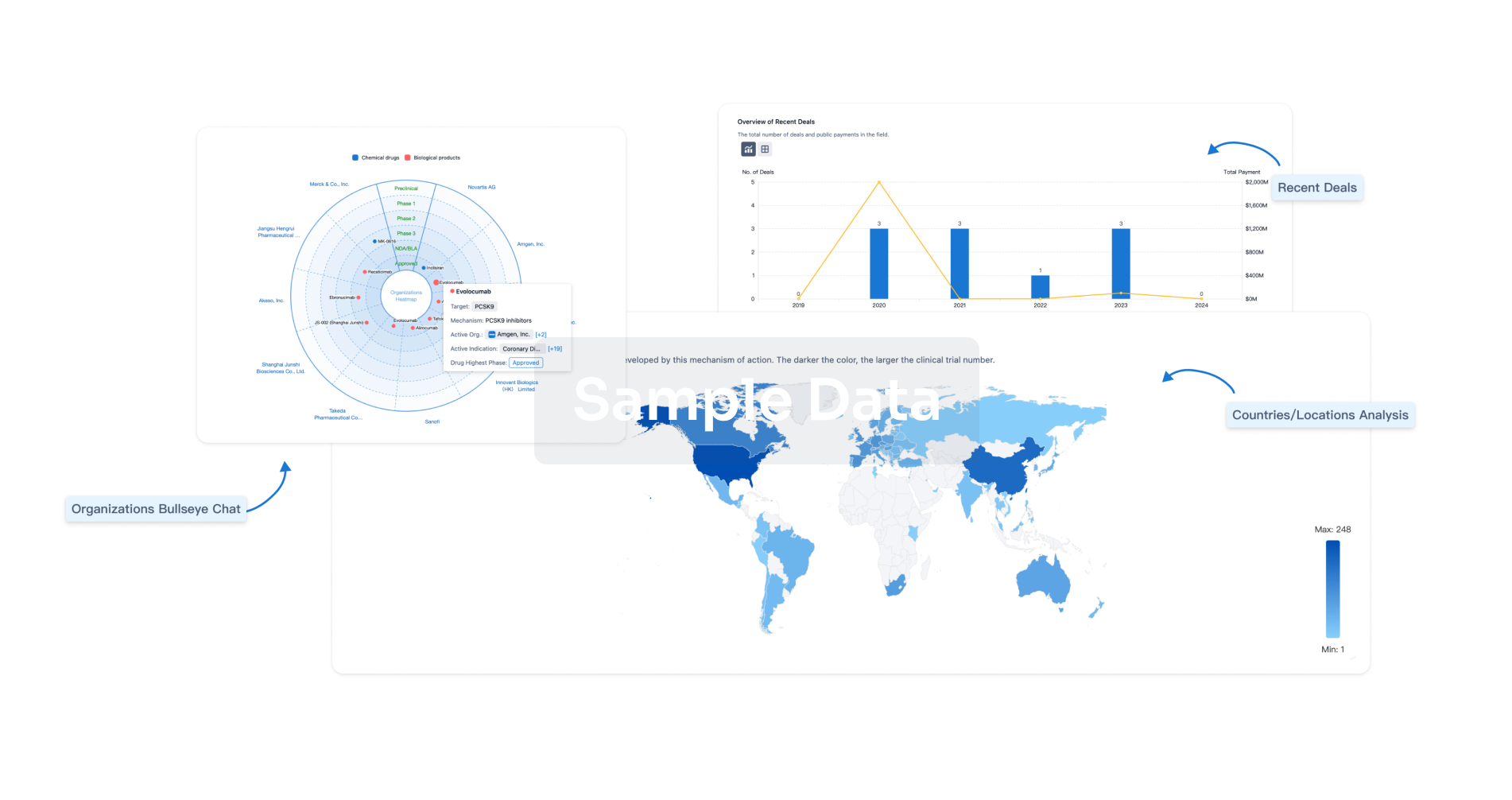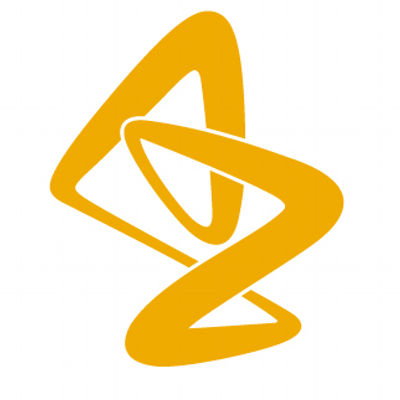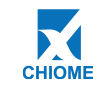Request Demo
Last update 08 May 2025
CX3CR1
Last update 08 May 2025
Basic Info
Synonyms Beta chemokine receptor-like 1, C-X3-C CKR-1, C-X3-C motif chemokine receptor 1 + [14] |
Introduction Receptor for the C-X3-C chemokine fractalkine (CX3CL1) present on many early leukocyte cells; CX3CR1-CX3CL1 signaling exerts distinct functions in different tissue compartments, such as immune response, inflammation, cell adhesion and chemotaxis (PubMed:12055230, PubMed:23125415, PubMed:9390561, PubMed:9782118). CX3CR1-CX3CL1 signaling mediates cell migratory functions (By similarity). Responsible for the recruitment of natural killer (NK) cells to inflamed tissues (By similarity). Acts as a regulator of inflammation process leading to atherogenesis by mediating macrophage and monocyte recruitment to inflamed atherosclerotic plaques, promoting cell survival (By similarity). Involved in airway inflammation by promoting interleukin 2-producing T helper (Th2) cell survival in inflamed lung (By similarity). Involved in the migration of circulating monocytes to non-inflamed tissues, where they differentiate into macrophages and dendritic cells (By similarity). Acts as a negative regulator of angiogenesis, probably by promoting macrophage chemotaxis (PubMed:14581400, PubMed:18971423). Plays a key role in brain microglia by regulating inflammatory response in the central nervous system (CNS) and regulating synapse maturation (By similarity). Required to restrain the microglial inflammatory response in the CNS and the resulting parenchymal damage in response to pathological stimuli (By similarity). Involved in brain development by participating in synaptic pruning, a natural process during which brain microglia eliminates extra synapses during postnatal development (By similarity). Synaptic pruning by microglia is required to promote the maturation of circuit connectivity during brain development (By similarity). Acts as an important regulator of the gut microbiota by controlling immunity to intestinal bacteria and fungi (By similarity). Expressed in lamina propria dendritic cells in the small intestine, which form transepithelial dendrites capable of taking up bacteria in order to provide defense against pathogenic bacteria (By similarity). Required to initiate innate and adaptive immune responses against dissemination of commensal fungi (mycobiota) component of the gut: expressed in mononuclear phagocytes (MNPs) and acts by promoting induction of antifungal IgG antibodies response to confer protection against disseminated C.albicans or C.auris infection (PubMed:29326275). Also acts as a receptor for C-C motif chemokine CCL26, inducing cell chemotaxis (PubMed:20974991).
(Microbial infection) Acts as a coreceptor with CD4 for HIV-1 virus envelope protein.
(Microbial infection) Acts as a coreceptor with CD4 for HIV-1 virus envelope protein (PubMed:14607932). May have more potent HIV-1 coreceptothr activity than isoform 1 (PubMed:14607932).
(Microbial infection) Acts as a coreceptor with CD4 for HIV-1 virus envelope protein (PubMed:14607932). May have more potent HIV-1 coreceptor activity than isoform 1 (PubMed:14607932). |
Related
12
Drugs associated with CX3CR1Target |
Mechanism CX3CR1 modulators |
Active Org. |
Originator Org. |
Active Indication |
Inactive Indication |
Drug Highest PhasePhase 2 |
First Approval Ctry. / Loc.- |
First Approval Date20 Jan 1800 |
Target |
Mechanism CX3CR1 antagonists |
Active Org. |
Originator Org. |
Active Indication |
Inactive Indication- |
Drug Highest PhasePhase 1 |
First Approval Ctry. / Loc.- |
First Approval Date20 Jan 1800 |
Target |
Mechanism CX3CR1 antagonists |
Active Org. |
Originator Org. |
Active Indication |
Inactive Indication- |
Drug Highest PhasePreclinical |
First Approval Ctry. / Loc.- |
First Approval Date20 Jan 1800 |
15
Clinical Trials associated with CX3CR1CTIS2024-511618-19-00
- PDY17892
Start Date24 Jun 2024 |
Sponsor / Collaborator |
CTIS2022-502923-23-00
- SAD17732-MAD17733
Start Date12 Jun 2023 |
Sponsor / Collaborator |
NCT06087289
KANDOVA - a Two-Part Phase Ib/IIa Study to Evaluate the Safety and Tolerability of KAND567, in Combination with Carboplatin Therapy, and to Determine the Recommended Phase II Dose (RPIID) of KAND567: an Open-Label, Multicenter Dose Escalation Study with an Expansion Cohort in Women with Recurrent Epithelial Ovarian, Fallopian Tube, or Primary Peritoneal Cancer
The study is a multicenter, Phase Ib/IIa, open-label, dose-escalation study to evaluate the safety and tolerability of orally administered KAND567 in combination with carboplatin therapy, and to determine the Recommended Phase II Dose (RPIID) of KAND567 in combination with carboplatin in subjects with recurrent platinum-resistant epithelial ovarian, fallopian tube, or primary peritoneal cancer.
In Part 1, dose escalation will be based on the recommendation of the Safety Review Committee (SRC) after review of the emerging safety and tolerability information. The SRC is also mandated to modify the dose levels within the dose range (125 to 625 mg BID), as well as the schedule to maintain subject safety and best serve the objectives of the study. Once the RPIID has been identified in Part 1, the SRC may recommend to the Sponsor to start Part 2.
An expansion cohort will be enrolled in Part 2 of the study to further evaluate the RPIID (approximately 20 subjects; may range from 6 to 24 subjects, depending on Part 1). If the number of subjects with confirmed CX3CR1 expression in tumor cells is below 50%, an additional 15 subjects may be included in Part 2 of the study.
In Part 1, dose escalation will be based on the recommendation of the Safety Review Committee (SRC) after review of the emerging safety and tolerability information. The SRC is also mandated to modify the dose levels within the dose range (125 to 625 mg BID), as well as the schedule to maintain subject safety and best serve the objectives of the study. Once the RPIID has been identified in Part 1, the SRC may recommend to the Sponsor to start Part 2.
An expansion cohort will be enrolled in Part 2 of the study to further evaluate the RPIID (approximately 20 subjects; may range from 6 to 24 subjects, depending on Part 1). If the number of subjects with confirmed CX3CR1 expression in tumor cells is below 50%, an additional 15 subjects may be included in Part 2 of the study.
Start Date26 Apr 2023 |
Sponsor / Collaborator |
100 Clinical Results associated with CX3CR1
Login to view more data
100 Translational Medicine associated with CX3CR1
Login to view more data
0 Patents (Medical) associated with CX3CR1
Login to view more data
2,960
Literatures (Medical) associated with CX3CR131 Dec 2025·Gut Microbes
Fusobacterium nucleatum
-driven CX3CR1
+
PD-L1
+
phagocytes route to tumor tissues and reshape tumor microenvironment
Article
Author: Liu, Le ; Guo, Songhe ; Chen, Fangfang ; An, Jun ; Zhang, Ge ; Lu, Yongfan ; Li, Yiqiu ; Chen, Shengxin
01 Jul 2025·Brain, Behavior, and Immunity
CX3CL1-CX3CR1 pathway mediates hyperthermia-induced microglial processes retraction
Article
Author: Qian, Zhengjiang ; Feng, Bo ; Peng, Minqi ; Liu, Chunhua ; Song, Ru ; Yu, Fangmei ; Li, Xiang ; Yao, Mingchen ; Wei, Mingyu
01 Jul 2025·Brain, Behavior, and Immunity
Hormonal contraceptives in adolescence impact the neuroimmune environment of the medial prefrontal cortex and hippocampus in female rats
Article
Author: Ranade, Sanjana ; Rajesh, Abhishek ; Lenz, Kathryn M ; Biddle, Abigail ; Dybas, Elizabeth ; Stewart, Meredith ; Leuner, Benedetta ; Gilfarb, Rachel A
8
News (Medical) associated with CX3CR130 Jan 2025
Sanofi disclosed removals from its pipeline alongside the progress of other molecules. \n Sanofi has removed (PDF) a clutch of programs from its clinical pipeline, scratching out entries for its late-phase BTK inhibitor and phase 1 prospects linked to the multibillion-dollar takeovers of Ablynx, Principia Biopharma and Synthorx.The French drugmaker added the BTK inhibitor tolebrutinib to its pipeline by acquiring Principia for $3.7 billion. Facing down skepticism, Sanofi guided the asset to mixed phase 3 data last year, with the win in one form of multiple sclerosis offset by failures in another form of the disease. The company removed the relapsing multiple sclerosis program from its pipeline but plans to file for approval in another setting.Sanofi removed three assets from its phase 1 pipeline. Pegenzileukin, the IL-2 candidate Sanofi picked up through its $2.5 billion takeover of Synthorx, was one of the assets affected by the clearout. The molecule suffered a setback in 2022, triggering a 1.6 billion euro ($1.7 billion) impairment, but Sanofi kept going.The drugmaker began a phase 1/2 program in 2023 to optimize the dose schedule for the treatment of solid tumors. Sanofi listed the study of the candidate, which is also called SAR444245 and THOR-707, in “cancer, in combination” among the programs removed from phase 1 in the fourth quarter. The other two early-phase removals affected nanobodies, the platform technology Sanofi acquired in its 3.9 billion euro ($4.1 billion) takeover of Ablynx. One of the removed drug candidates, SAR445611, is an anti-CX3CR1 nanobody that Sanofi was developing in an inflammatory indication. The second jettisoned molecule is SAR444200, a GPC3-based nanobody T-cell engager that Sanofi was testing in solid tumors.\"Sanofi continues to prioritize our pipeline to focus on medicines and vaccines that deliver the greatest value for patients,\" a company spokesperson told Fierce Biotech in an emailed statement. \"That\'s why we\'ve made the decision to discontinue these select programs where we believe we cannot deliver meaningful value to patients.\"Sanofi disclosed the removals alongside the progress of other molecules. SP0202 advanced into phase 3, furthering Sanofi’s push to bring the SK bioscience-partnered 21-valent pneumococcal conjugate vaccine candidate to market. Sanofi recently agreed to pay 50 million euros ($52 million) upfront to expand its pneumococcal vaccine collaboration with SK.When it comes to dealmaking this year, Sanofi\'s CFO François Roger said the French pharma would be looking out for companies in the value range of 2 billion euros to 5 billion euros. “We will continue to explore external growth opportunities to strengthen our four existing therapeutic areas and potentially cover white spaces,” Roger said on an earnings call with analysts this morning. “We don\'t feel any pressure to go crazy on M&A and BD, so we will remain very disciplined while having the opportunity to compliment whatever we have in our pipeline.”Editor\'s note: This article has been updated with a statement from Sanofi.

AcquisitionVaccinePhase 3Phase 1
11 Dec 2024
TOKYO & NOVI, Mich. & DÜSSELDORF, Germany--(
BUSINESS WIRE
)--
Asahi Kasei Pharma
has taken another step in its transformation into a global specialty pharmaceuticals company through a
new licensing agreement with Chiome Bioscience
for its humanized anti-CX3CR1 antibody. The partnership exemplifies Asahi Kasei Pharma’s Open Innovation platform, which addresses unmet medical needs through strategic collaboration and cutting-edge science.
The anti-CX3CR1 antibody, currently in preclinical development, works by inhibiting CX3CR1, a receptor involved in immune cell migration to inflammatory sites. By accelerating its development, Asahi Kasei Pharma aims to bring an innovative therapy to market that could significantly improve patient outcomes.
“
By establishing an effective co-creation framework with Chiome, we successfully brought this initiative to fruition,” said Dr. Kazunobu Konishi, Senior General Manager of Pharmaceuticals Research Center at Asahi Kasei Pharma. “
We hope that this partnership will expedite the development of the anti-CX3CR1 antibody. Furthermore, we are committed to intensifying our open innovation activities to continuously secure global rights to early-stage projects, thereby enhancing our presence on the global stage.”
The licensing agreement complements the “One AK Pharma” initiative, which unifies Asahi Kasei’s pharmaceutical operations in Japan and the U.S. to optimize resources and drive healthcare expertise. Earlier this year,
Asahi Kasei acquired Calliditas Therapeutics
, a Swedish firm recognized for developing TARPEYO™, a therapy for immunoglobulin A (IgA) nephropathy, a rare kidney disease.
“
We’ve integrated our pharmaceutical businesses worldwide to better achieve our mid- and long-term goals,” said Yoshikazu Aoki, President of Asahi Kasei Pharma. “
This effort includes consolidating our Business Development functions in the U.S., where we plan to further accelerate activities that drive growth and innovation. Additionally, the acquisition of Calliditas strengthens our business foundation, enabling us to expand the scale of our pharmaceutical operations in the U.S. and enhance our market presence. These initiatives are key to Asahi Kasei’s goal of reaching $3 billion in annual pharmaceutical sales by 2030 through specializing in immunology, transplantation, and related diseases.”
Through partnerships like the licensing agreement with Chiome, and a commitment to research-driven innovation, Asahi Kasei Pharma is well-positioned to address pressing global health challenges and deliver meaningful solutions that enhance quality of life.
Learn more about Asahi Kasei Pharma’s
Open Innovation platform
.
About Asahi Kasei
The Asahi Kasei Group contributes to life and living for people around the world. Since its foundation in 1922 with ammonia and cellulose fiber business, Asahi Kasei has consistently grown through the proactive transformation of its business portfolio to meet the evolving needs of every age. With more than 49,000 employees worldwide, the company contributes to sustainable society by providing solutions to the world’s challenges through its three business sectors of Material, Homes, and Health Care. For more information, visit
www.asahi-kasei.com
.
Asahi Kasei is also dedicated to sustainability initiatives and is contributing to reaching a carbon neutral society by 2050. To learn more, visit
https://www.asahi-kasei.com/sustainability/
.
License out/in
01 Apr 2024
On March 18th, Cell published online a research paper about a new mechanism involving the gut in regulating cholesterol metabolism. The researchers discovered a gut-derived hormone called Cholesin, which is triggered by cholesterol intake and produced within intestinal cells. Cholesin achieves inhibition of the PKA-ERK1/2 signaling pathway in the liver by binding to the GPR146 receptor there, thereby downregulating the cholesterol synthesis process regulated by SREBP2. This means that when the gut absorbs cholesterol, the Cholesin-GPR146 axis acts to suppress cholesterol production in the liver, helping to maintain stable blood cholesterol levels and combat hypercholesterolemia and atherosclerosis.
DOI: 10.1016/j.cell.2024.02.024To investigate the interaction between intestinal cholesterol absorption and hepatic cholesterol synthesis, the researchers designed experiments to induce mice to consume diets with varying cholesterol content (regular diet and high-cholesterol Western diet) and observed changes in cholesterol levels in the intestine and liver. Under a high-cholesterol diet, intestinal cholesterol content increased, accompanied by downregulated expression of the cholesterol biosynthesis marker HMGCR in the intestine, suggesting a negative feedback mechanism where absorbed cholesterol can influence its own synthesis.
Against this backdrop, the researchers identified a new gut-derived hormone induced by cholesterol – Cholesin. Cholesin is triggered by cholesterol absorption mediated by NPC1L1, with its gene encoded in humans as C7orf50 and in mice as 3110082I17Rik. After secretion by intestinal cells, Cholesin binds to a specific orphan GPCR member, GPR146, and suppresses the PKA-ERK1/2 signaling pathway, reducing the hepatic cholesterol synthesis activity regulated by SREBP2.
To further confirm the relationship between Cholesin and its receptor GPR146, researchers employed a variety of experimental approaches, including but not limited to binding assays on frozen tissue sections, genome-wide CRISPR-Cas9 screenings, and immunohistochemistry techniques. Ultimately, it was established that GPR146 is an effective receptor for Cholesin, and the interaction between Cholesin and GPR146 directly influences the regulation of cholesterol metabolism. Through CRISPR screenings, protein expression purification, and a range of experimental validations, Cholesin's mechanism of action was elucidated, and it was demonstrated that both the sole use of Cholesin and its combination with statin drugs significantly reduce total plasma cholesterol levels and alleviate atherosclerotic lesions. Moreover, Cholesin can also decrease body weight gain, lower triglyceride levels, and improve hepatic lipid accumulation and inflammation markers.
About AtherosclerosisAtherosclerosis is a chronic inflammatory disease, primarily characterized by the accumulation of substantial amounts of cholesterol and other lipid substances on the vessel walls, forming plaques. These plaques gradually enlarge and can lead to the narrowing of the arterial lumen, impeding blood flow. Additionally, these plaques may become unstable and rupture, causing thrombosis, which in turn can trigger serious events such as myocardial infarction or stroke.
Cholesterol is an essential lipid for the human body, involved in the construction of cell membranes, hormone synthesis, and various other physiological functions. However, when cholesterol levels in the blood are too high, especially when low-density lipoprotein cholesterol (LDL-C) concentrations are excessive, the risk for cardiovascular diseases increases, with the most notable being the onset and progression of atherosclerosis. Studies have shown that an excess of cholesterol, particularly oxidized LDL cholesterol, penetrating beneath endothelial cells, can trigger an inflammatory response through a complex series of biochemical processes. This stimulates smooth muscle cell migration and proliferation, causes macrophages to engulf lipids and become foam cells, forming what are called fatty streaks, which then evolve into mature atherosclerotic plaques.
In addition to the abnormal accumulation of lipids, the state of imbalance between immune responses and their clearance is also believed to be primarily shaped by the migration and homeostasis of leukocytes, which are regulated by chemokines and their receptors. In recent years, new pro-inflammatory and anti-inflammatory pathways that link lipid biology with inflammation have been discovered, and gene expression profiling studies have revealed various factors involved in human coronary artery disease.
Cardiovascular diseases are the leading cause of death globally, with an estimated 17.8 million people dying each year. Inflammation is considered to be one of the main driving forces in the development of atherosclerosis and is recognized as one of the major etiologies of cardiovascular disease.
Despite the increasing body of research evidence over the past three decades showing that immune components play an indispensable role in the formation and chronicity of atherosclerosis, through a series of immunotherapeutic targets, the benefits and challenges brought about by targeting inflammation and the immune system in cardiovascular diseases have been demonstrated.
DOI: 10.1038/s41569-021-00668-4DOI: 10.1038/nm.2538Using the diagram above as an example, chemokines and their receptors also play an important role in the pathogenesis of atherosclerosis. The process of leukocyte recruitment includes rolling, firm adhesion, lateral migration, and transendothelial migration, which are finely regulated by chemokines. On the one hand, soluble chemokines directly mediate the recruitment of leukocytes; on the other hand, chemokines immobilized by glycosaminoglycans (GAGs) on the surface of activated endothelial cells can trigger the docking of leukocytes through GPCRs and activate leukocyte integrins, thus achieving firm adhesion. The cell-specific and lesion stage-specific utilization of chemokines and their receptors underscores the robustness and complexity of the chemokine system, ensuring the formation of specific chemokine combinations at each stage of the lesion that attract specific subtypes of leukocytes. Synergistic effects among chemokines in the recruitment of leukocytes can lead to cooperative interactions, potentially mediating the process between leukocytes and atherosclerotic lesions.
According to statistics from the Synapse database, as of now, there are more than 500 therapeutic drug pipelines globally, originating from over 400 institutions, encompassing over 200 targets, and involving 4095 clinical trials. The therapeutic drugs for this disease have a diverse range of Mechanisms of Action (MOA).
At present, the primary therapeutic drugs for the treatment of atherosclerosis include statins, which function primarily by inhibiting the key enzyme in cholesterol biosynthesis—hydroxymethylglutaryl-coenzyme A (HMG-CoA) reductase. Examples include Lovastatin (Merck, approved in 1987), Fluvastatin (Novartis, approved in 1993), Atorvastatin (Pfizer, approved in 1996), Rosuvastatin (AstraZeneca, approved in 2002).
P2Y12 receptor antagonists are another class of therapeutic drugs for atherosclerosis, acting by selectively blocking the function of the P2Y12 receptor to inhibit excessive activation and aggregation of platelets. This is crucial because platelets play a key role in the development of atherosclerosis and thrombosis, especially in the progression of cardiovascular diseases. Common drugs in this category include Clopidogrel (Sanofi, approved in 1997), Ticagrelor (AstraZeneca, approved in 2010), Cangrelor (CHIESI, approved in 2015).
Additionally, in recent years, PCSK9 has emerged as a therapeutic candidate for the treatment of hypercholesterolemia and atherosclerosis-related diseases. The primary function of PCSK9 is to regulate the number of low-density lipoprotein cholesterol (LDL-C) receptors on the membrane of liver cells. When PCSK9 binds to LDL receptors, it leads to their degradation within lysosomes, thereby reducing the uptake and clearance of circulating LDL-C by the liver, resulting in elevated levels of LDL-C in the blood. Therapeutic drugs related to this mechanism include Evolocumab (Amgen, approved in 2015), Alirocumab (Sanofi, approved in 2015), Inclisiran (Novartis, approved in 2020).
Factor Xa inhibitors are a class of drugs that specifically inhibit the activity of coagulation factor Xa (FXa). FXa plays a crucial role in the blood coagulation process, as it acts as a key enzyme in the coagulation cascade, facilitating the conversion of prothrombin to thrombin, which in turn catalyzes the transformation of fibrinogen into fibrin, leading to the formation of a stable clot. By binding to FXa and preventing its activity, Factor Xa inhibitors can effectively suppress the formation of thrombi and are widely used in clinical practice to prevent and treat various thrombotic diseases, such as deep vein thrombosis, pulmonary embolism, and stroke prevention in patients with atrial fibrillation. Therapeutic candidates in this category include Rivaroxaban (Bayer, approved in 2008), Edoxaban Tosylate (Daiichi Sankyo, approved in 2012), Apixaban (Bristol-Myers Squibb, approved in 2011).
Additionally, SGLT2 inhibitors were initially developed for the treatment of type 2 diabetes by inhibiting the SGLT2 transporter protein in the renal proximal convoluted tubules, reducing the reabsorption of glucose and thereby promoting the excretion of glucose in the urine, leading to decreased blood glucose levels. In recent years, multiple large-scale clinical trials have revealed the significant therapeutic effect of SGLT2 inhibitors in reducing the risk of cardiovascular events, especially in patients with type 2 diabetes who have atherosclerotic cardiovascular diseases. Therapeutic candidates related to this include Tofogliflozin (Kowa, approved in 2014) and Ertugliflozin (Pfizer, approved in 2017).
Besides the classical P2Y12 receptor, potential therapeutic targets within the GPCR family include AT1R, PAR-1R, CXCR4, CCR2, NIACR1, TBXA2R, PGI2R, ADRA1, and EP3. However, the progress in the drug pipeline related to these targets is not promising. Only Vorapaxar, a tricyclic compound derived from camptothecin that acts as a selective inhibitor on thrombin-activated receptor (PAR-1), has been approved for reducing the incidence of thrombotic cardiovascular events in patients with a history of myocardial infarction (MI) or peripheral artery disease (PAD).
The first antibody drug candidate developed targeting an immunomodulatory factor associated with GPCRs for treating atherosclerosis is the humanized monoclonal antibody Plozalizumab, an antagonistic monoclonal antibody targeting CCR2 developed by Takeda Pharmaceutical in Japan. CCR2 plays a critical role in the migration of monocytes and macrophages to sites of inflammation. The recruitment of macrophages to the arterial wall is considered a key step in the development of atherosclerosis.
The first nanobody drug candidate is BI-655088, targeting the CX3CR1 receptor.
Analysis
Perform a panoramic analysis of this field.
login
or

AI Agents Built for Biopharma Breakthroughs
Accelerate discovery. Empower decisions. Transform outcomes.
Get started for free today!
Accelerate Strategic R&D decision making with Synapse, PatSnap’s AI-powered Connected Innovation Intelligence Platform Built for Life Sciences Professionals.
Start your data trial now!
Synapse data is also accessible to external entities via APIs or data packages. Empower better decisions with the latest in pharmaceutical intelligence.
Bio
Bio Sequences Search & Analysis
Sign up for free
Chemical
Chemical Structures Search & Analysis
Sign up for free



